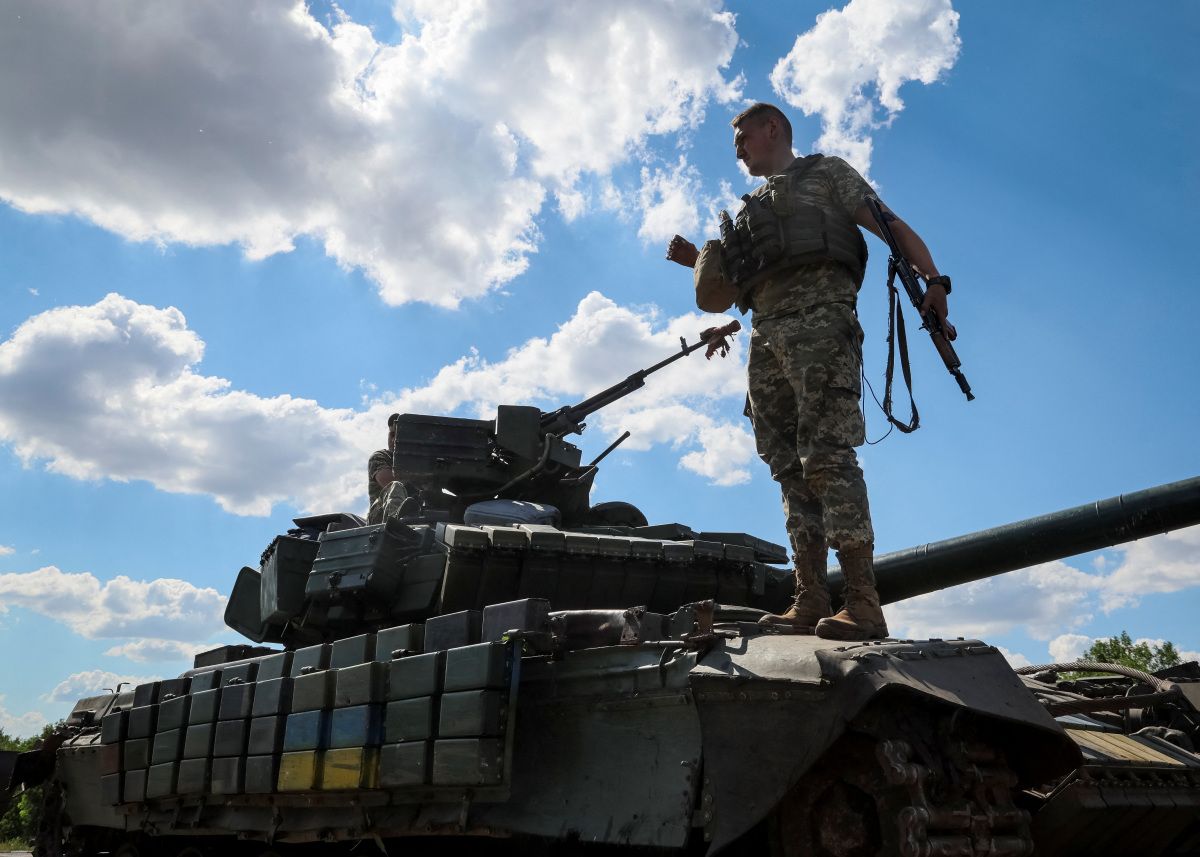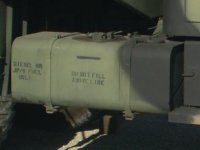Let me be clear from the outset: I F**KING hate communism. In fact, if I can engage in a bit of historical revisionism, I think the world would've been better off if the Germans had beaten the Soviets in the '40s. This is not to say that I'm a Nazi. Anyone who's read my posts over the decades will know that my libertarian and contrarian inclinations would doubtless have seen me executed by either the Nazis or the Stalinist Communists, but I do believe that decades of Communism resulted in far more deaths than the Nazis would have perpetrated.
With that out of the way, I fear that many - many, not all - of our members don't understand something very important about the Russians. Well, perhaps several somethings. First, Russia isn't a communist country and hasn't been for decades now. I have long wished the (non-communist) Russians every success in overcoming their communist past and seeing individual liberty blossom there. We in the United States have not helped in this process and really have taken advantage of the Russians at every turn.
In 1941 when the Germans invaded Russia, they initiated a war that eventually consumed 27 million Soviet lives. Readers have to understand something about WWII from the Russian perspective: They don't draw a strict line between the Communist USSR and the modern Russian Federation. They only see that Germany killed 27 million Russians. Period. To the Russians, 1941 - 1945 almost seems like yesterday. Remember that Russia still holds a grudge against France for Napoleon's invasion of Russia over 200 years ago.
The idea of the Germans supplying German tanks to be used against Russia will, to the Russian psyche, seem like December 7th, 1941 is to Americans, but multiplied many thousands of times. I can think of very few things which would infuriate the Russians as much Germany sending tanks to Ukraine.
Western leaders are playing a very dangerous - and potentially thermonuclear - game with Russia and there is every possibility of it having tragic consequences.
Best
Doc
And adding to the distrust that Russia would have for the US is the fact the while Russia has never invaded the US, the US invaded Russia in support of White Russian forces during the Russian Civil War.
Wonder how many US citizens have even heard of this?
The
American Expeditionary Force, North Russia (AEF in North Russia) (also known as the Polar Bear Expedition), and the
American Expeditionary Force, Siberia (AEF in Siberia)
@@@@@@@@@@@
American Expeditionary Force, North Russia
The
American Expeditionary Force, North Russia (
AEF in North Russia) (also known as the
Polar Bear Expedition) was a contingent of about 5,000
United States Army troops
[1] that landed in
Arkhangelsk,
Russia as part of the
Allied intervention in the Russian Civil War. It fought the
Red Army in the surrounding region during the period of September 1918 through to July 1919.
History

State historical Marker at
White Chapel Cemetery in
Troy, Michigan
Background
U.S. President
Woodrow Wilson sent the Polar Bear Expedition to Russia in response to requests from the governments of
Great Britain and
France to join the
Allied Intervention in North Russia (also known as the
North Russia Campaign). The British and French had two objectives for this intervention:
[2]
- Preventing Allied war material stockpiles in Arkhangelsk (originally intended for the recently collapsed Eastern Front) from falling into German or Bolshevik hands
- Mounting an offensive to rescue the Czechoslovak Legion, which was stranded along the Trans-Siberian Railroad
On July 14, 1918, the U.S. Army's
85th Division left their training camp at
Camp Custer,
Michigan for the
Western Front in France. Three days later, President Wilson agreed to limited participation by American troops in the Allied Intervention with the stipulation that they would only be used for guarding the stockpiled war material. When U.S. Army General
John J. Pershing received the directive from President Wilson, he changed the orders for the
339th Infantry Regiment, along with the First Battalion of the 310th Engineers plus a few other ancillary units from the 85th Division. Instead of heading for France, these units were trained and re-outfitted in England with Russian guns and then sent to North Russia. They arrived in Arkhangelsk on September 4, 1918, coming under British command. (Allied expeditionary forces had occupied Arkhangelsk on August 2, 1918.)
See
American Expeditionary Force, Siberia for information on the 7,950 American soldiers and officers sent to
Vladivostok, Russia at the same time.
[3]
Expedition
When the British commanders of the Allied Intervention arrived in
Arkhangelsk on August 2, 1918, they discovered that the Allied war material had already been moved up the
Dvina River by the retreating Bolshevik forces. Therefore, when the American troops arrived one month later, they were immediately used in offensive operations to aid in the rescue of the Czech Legion. The British commanders sent the First Battalion of the 339th Infantry up the Dvina River and the Third Battalion of the 339th up the
Vologda Railroad where they engaged and pushed back the Bolshevik forces for the next six weeks.
[4]
However, these two fronts each became hundreds of miles (kilometers) long and were extremely narrow and difficult to supply, maintain, and protect. By the end of October 1918, they were no longer able to maintain the offensive and acknowledging their fragile situation and the rapid onset of winter, the Allies began to adopt a defensive posture. The Allied commanders also soon realized they would be unable to raise an effective local force of anti-Bolshevik soldiers. Thus they gave up the goal of linking up with the Czech Legion and settled in to hold their gains over the coming winter. During that winter, the Bolshevik army went on the offensive, especially along the
Vaga River portion of the Dvina River Front, where they inflicted numerous casualties and caused the Allies to retreat a considerable distance.
During their time in North Russia, the American forces suffered more than 210 casualties, including at least 110 deaths from battle, about 30 missing in action, and 70 deaths from disease, 90% of which were caused by the
Spanish flu.[
citation needed] An October 1919 report gives the casualties as 553: 109 killed in battle; 35 died of wounds; 81 from disease; 19 from accidents/other causes; 305 wounded and 4 POWS (released).
[5]
Withdrawal
Following the Allied
Armistice with Germany on November 11, 1918, family members and friends of soldiers in the AEF began writing letters to newspapers and circulating petitions to their representatives in the
U.S. Congress, asking for the immediate return of the force from North Russia. In turn, the newspapers editorialized for their withdrawal and their congressmen raised the issue in
Washington, D.C. Meanwhile, aware of not only the change in their mission, but also of the Armistice on the Western Front and the fact that the port of Arkhangelsk was now frozen and closed to shipping, the morale of the American soldiers plummeted. They asked their officers why they were fighting Bolshevik soldiers in Russia and did not receive a clear answer, other than that they had to fight to survive and avoid the Bolshevik army pushing them into the
Arctic Ocean.

A
Bolshevik soldier shot by an American guard 8 January 1919

A Bolshevik soldier killed in an attempted
flank attack on
Allied troops at Bolshie Ozerki, Russia 8 April 1919
Early in 1919, instances of rumored and actual mutinies in the Allied ranks became frequent. On July 15, 1919, it was reported by the
Alaska Daily Empire that rumors of mutiny were "bunk" and that commander Major Nichols reported “What gave rise to the story that Company I, of the regiment, had mutinied was an Incident (sic.) to which an order was misunderstood by a soldier who could not understand English well.”
[6] President Wilson directed the War Department on February 16, 1919, to begin planning the withdrawal of AEF in North Russia from Northern Russia. In March 1919, four American soldiers in Company B of the 339th Infantry drew up a petition protesting their continued presence in Russia and were threatened with court-martial proceedings.
U.S. Army Brigadier General
Wilds P. Richardson arrived in Arkhangelsk aboard the icebreaker
Canada on April 17, 1919, with orders from General Pershing to organize a coordinated withdrawal of American troops "...at the earliest possible moment." On May 26, 1919, the first half of 8,000 volunteer members of the British North Russian Relief Force arrived in Arkhangelsk to relieve the American troops. In early June, the bulk of the AEF in North Russia sailed for
Brest, France and then for
New York City and home—which for two-thirds of them was in the state of Michigan. During the withdrawal, the men of the AEF in North Russia decided to call themselves "Polar Bears" and were authorized to wear the Polar Bear insignia on their left sleeve. On July 15, 1919, it was reported by the
Alaska Daily Empire that forty-six officers and 1,495 men of the Polar Bear Expedition, were the first American troops to return home from service in Northern Russia, arrived in
Hoboken, New Jersey aboard the Von Steuben.
[6] The AEF in North Russia officially disbanded on August 5, 1919.During their time in North Russia, the American forces suffered more than 210 casualties, including at least 110 deaths from battle, about 30 missing in action, and 70 deaths from disease, 90% of which were caused by the
Spanish flu.[
citation needed] An October 1919 report gives the casualties as 553: 109 killed in battle; 35 died of wounds; 81 from disease; 19 from accidents/other causes; 305 wounded and 4 POWS (released).
[7]
Several years after the American troops were withdrawn from Russia, President
Warren G. Harding called the expedition a mistake and blamed the previous administration.
[8]
Aftermath
A year after all of the expedition members had returned home, in 1920 Polar Bear veterans began lobbying their state and Federal governments to obtain funds and the necessary approvals to retrieve the bodies of at least 125 of their fellow American soldiers which were then believed to have been buried in Russia and left behind. By that time, 112 sets of remains had already been transferred to the United States.
[9] By 1929, additional research found that 226 fallen "polar bears" had originally been buried in North Russia,
[10] with a total of approximately 130 sets of U.S. soldier remains then estimated to still be buried in North Russia. Hampered by the lack of diplomatic recognition between the United States and the
Soviet Union, it took many years before they finally received permission. An expedition under the auspices of the
Veterans of Foreign Wars (VFW) was successful in organizing and conducting a recovery mission in the autumn of 1929 that found, identified and brought out the remains of 86 U.S. soldiers.
[11] 14 remains of AEF in North Russia soldiers were shipped by the Soviet Union to the U.S. in 1934,
[12] which reduced the number of U.S soldiers still buried in North Russia to about 30.
The remains of 56 AEF soldiers were eventually re-buried in plots surrounding the Polar Bear Memorial by sculptor
Leon Hermant in
White Chapel Memorial Cemetery,
Troy, Michigan in a ceremony on May 30, 1930.
[13][14]
Harold Gunnes, who was born in 1899, died on March 11, 2003. Gunnes was believed to have been the last living American to have fought in the Allied Intervention near the port of Arkhangelsk on the White Sea.
[15]








